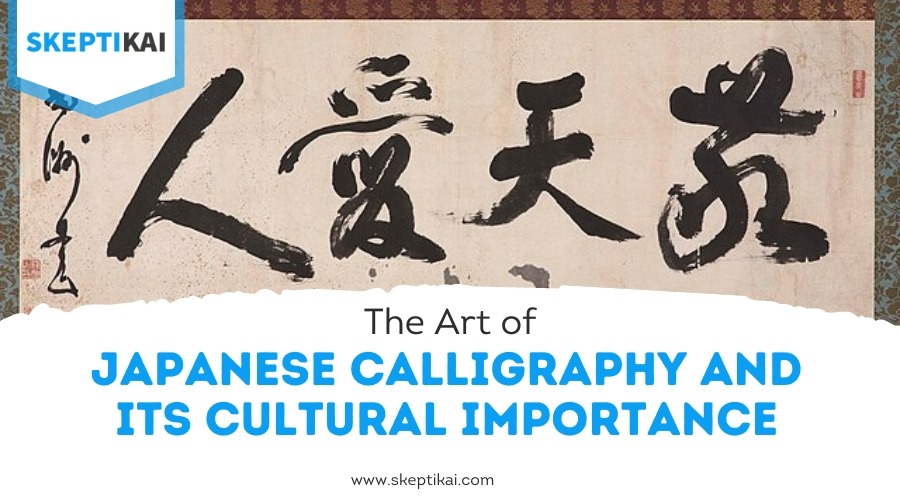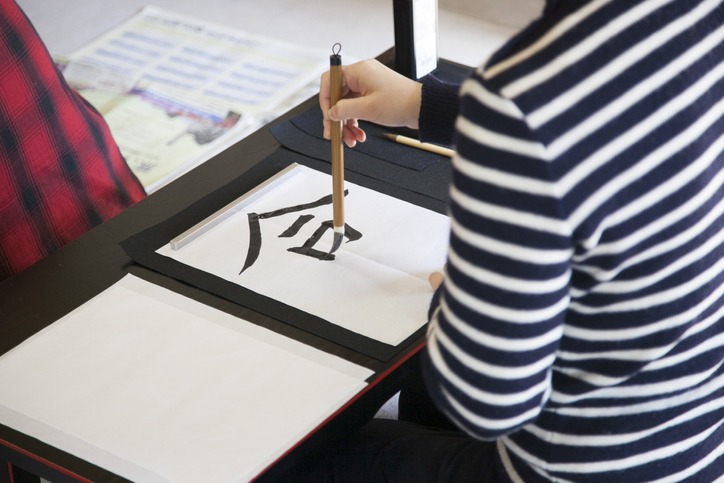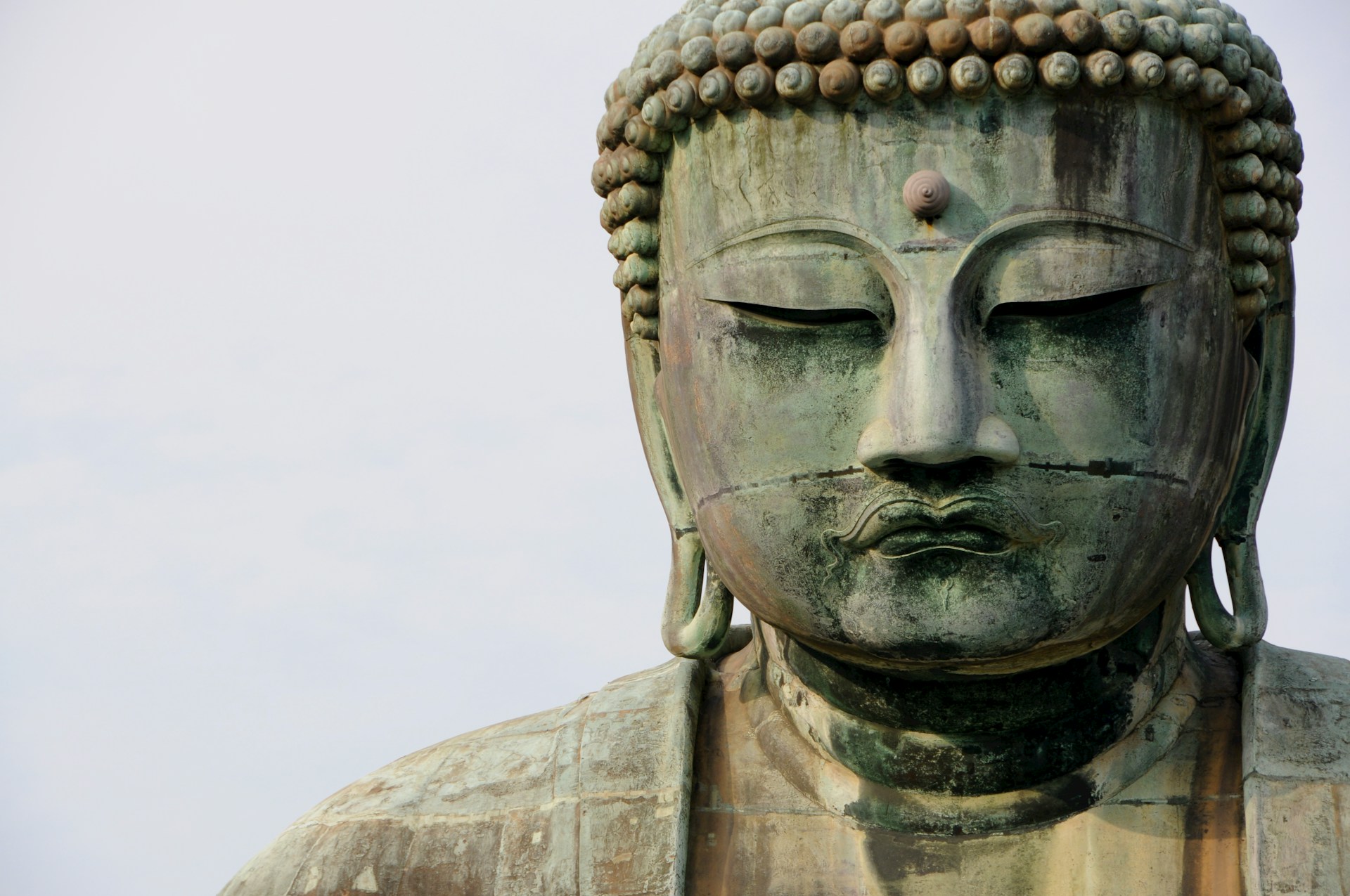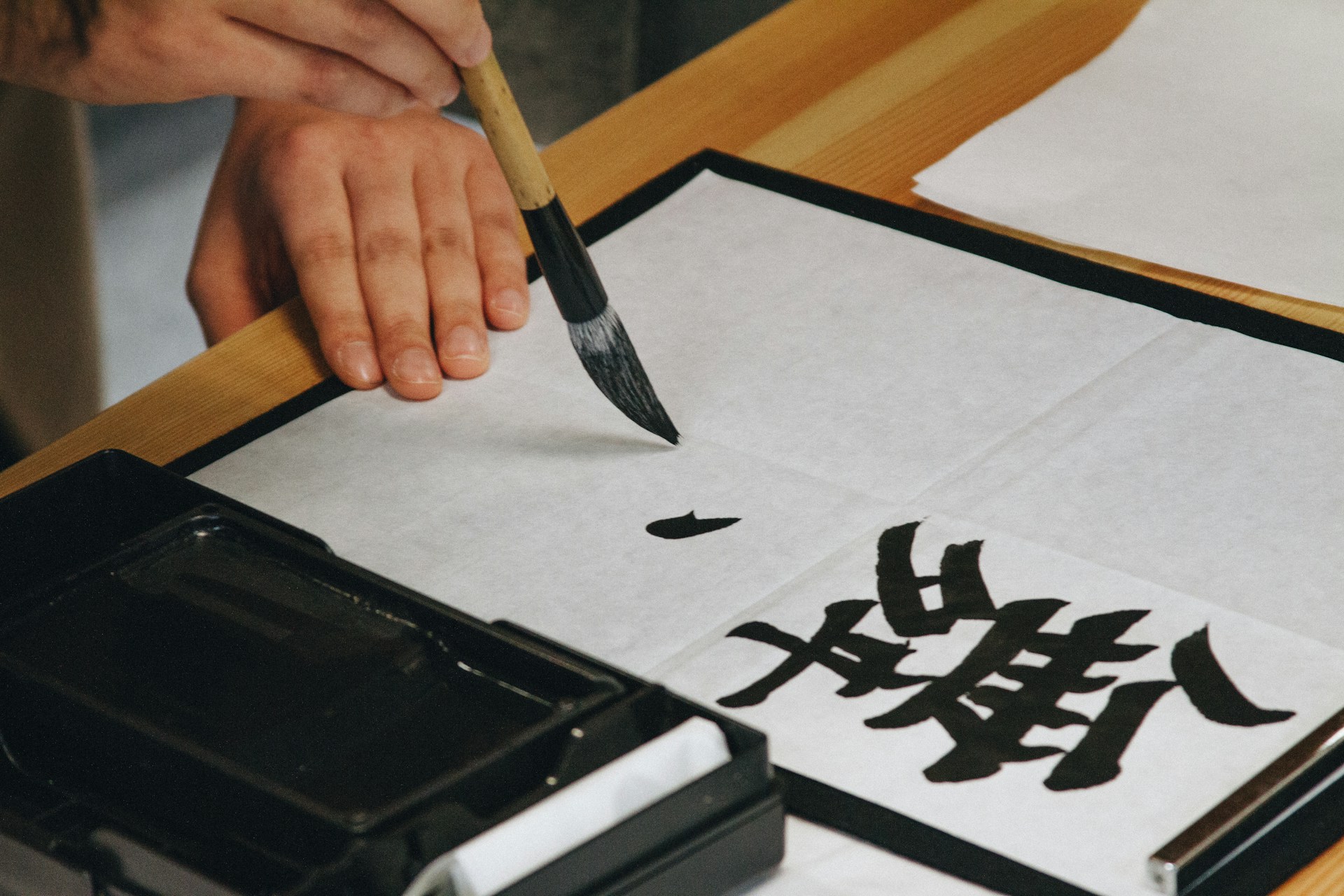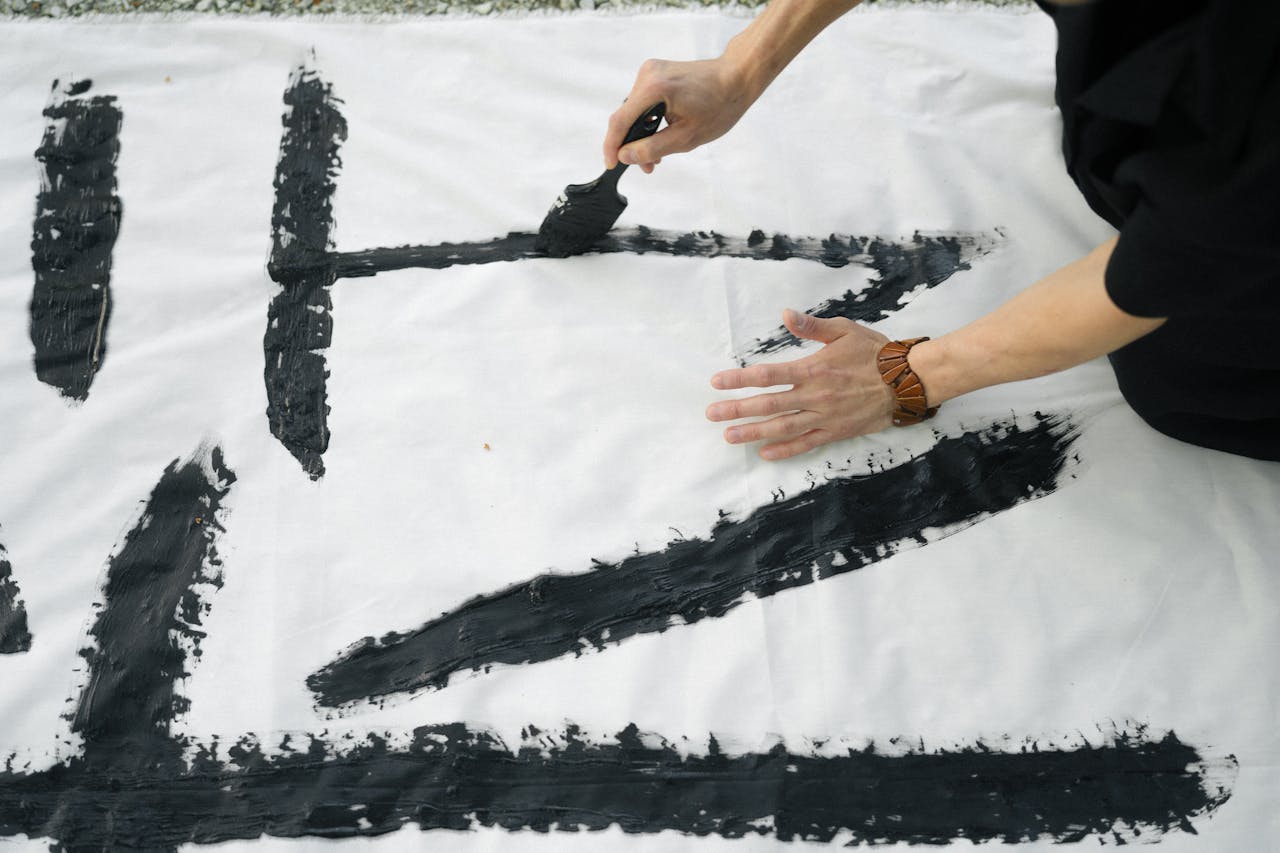Imagine you’ve time-traveled to ancient Japan, where the art of Shodo, or Japanese calligraphy, first began its journey, deeply rooted in Zen Buddhism. You’ll find that this art form is more than just writing; it’s a bridge connecting the past and present, embodying the essence of Japanese culture.
Through each stroke, an artist expresses their emotions and personality, a practice that requires not just skill but profound spiritual discipline. As you explore further, you’ll uncover the layers of philosophy, tradition, and dedication that make Shodo a unique testament to the cultural heritage of Japan.
Why does Shodo hold such a revered place in Japanese culture, and how has it managed to captivate both locals and enthusiasts worldwide?
The Origins of Shodo
Tracing its roots back to China about 3,500 years ago, Shodo then made its way to Japan in the 6th century, profoundly influencing the evolution of Japanese calligraphy. This art form quickly became integral to Japanese culture, intertwining with the nation’s history and spiritual life.
You’ll find that as Shodo developed, it adopted a unique style, distinguishing itself from its Chinese origins through the incorporation of kana characters, a script unique to Japan. These characters, along with traditional kanji symbols, allowed for a rich diversity in writing styles.
During the Heian period, Japanese calligraphy flourished, becoming more than just a way of writing. It evolved into a highly refined art form, with each stroke of the brush reflecting the calligrapher’s skill, aesthetic sense, and even their spirit. The ink used in Shodo, sumi, is rich and deeply pigmented, allowing for a wide range of expression.
The way the brush is handled, the pressure applied, and the flow of the ink on paper all contribute to the art’s distinctive character. In essence, Shodo is more than just writing; it’s a reflection of the calligrapher’s mind and heart, executed through the medium of Chinese characters and ink on paper.
Philosophical Foundations
Exploring the philosophical foundations of Japanese calligraphy reveals its deep connection to Zen Buddhism, where each brushstroke is a manifestation of the artist’s emotions and personality. This traditional art form, known as shodō, isn’t just about the art of writing; it’s an expression of the soul, requiring you to clear your mind and let the brush move freely.
Zen calligraphy emphasizes the importance of each brush and sumi ink stroke, reflecting the practitioner’s inner state in the cursive style of the characters. It’s more than mere writing; it’s a path to self-discovery and enlightenment. The cursive style, with its fluid and dynamic brush strokes, demands a harmony between mind, body, and spirit, showcasing the beauty and balance valued in Japanese culture.
As you delve into this art, you’ll find it’s steeped in the philosophical foundations of Zen, offering insights into harmony, wisdom, and the natural flow of life. Early exposure in Japanese schools instills an appreciation for these traditional artistic values, highlighting the cultural and spiritual significance of calligraphy. Through Zen calligraphy, you’re not just learning to write; you’re embarking on a meditative journey to explore your emotions, personality, and the deeper philosophical underpinnings of Japanese culture.
Traditional Styles Explored
Diving into the traditional styles of Japanese calligraphy, you’ll encounter five main types: Kaisho, Gyosho, Sosho, Reisho, and Kana, each offering unique challenges and aesthetic pleasures. Kaisho, the foundational block style, is where your journey starts, perfect for beginners to grasp the basics. As you progress, Gyosho and Sosho introduce you to the world of fluid strokes and abstract beauty, demanding more from your brush techniques. Reisho adds a layer of formality and structure, while the Kana script brings a distinctively Japanese phonetic flair to your artistic expression.
Here’s a quick overview to help visualize these styles:
| Style | Characteristic | Difficulty Level |
|---|---|---|
| Kaisho | Block style, clear and structured | Beginner |
| Gyosho | Semi-cursive, fluid strokes | Intermediate |
| Sosho | Abstract and cursive, aesthetic focus | Advanced |
| Reisho | Formal and clerical | Intermediate |
| Kana | Phonetic script, uniquely Japanese | Varied |
Each style not only enriches your skills in Japanese Calligraphy but also deepens your appreciation for its cultural significance. As you explore these styles, remember, it’s your dedication to mastering brush techniques and artistic expression that will truly bring your calligraphy to life.
Mastery Through Discipline
Having discussed the traditional styles, it’s clear that achieving mastery in Japanese calligraphy requires disciplined practice and a commitment to refining your brush techniques. This art isn’t just about putting ink on paper; it’s a journey of perfecting brush control, stroke precision, and artistic expression. Every stroke you make and every character you shape is a testament to your dedication and understanding of shodo.
Discipline in this art form means setting aside time each day for practice. It’s through these daily sessions that you’ll see improvements in your hand-eye coordination and unleash your creative potential. Remember, mastering Japanese calligraphy isn’t an overnight achievement. It demands patience, perseverance, and a deep dive into traditional techniques.
But, it’s not just about replicating what’s been done before. As you dedicate yourself to disciplined practice, you’ll start to develop your unique style. This personal touch is what breathes life into your work, making it more than just writing—it’s an extension of your artistic expression. By honoring these practices, you’re not only mastering an art form but also paying homage to its rich cultural significance. So, take your brush, dip it in ink, and let disciplined practice guide your path to mastery.
Essential Tools and Materials
To master Japanese calligraphy, you’ll need to familiarize yourself with its essential tools and materials, including a brush, ink, paper, inkstone, and weighted cloth. Each element plays a pivotal role in this art form, ensuring your creations aren’t just writings, but expressions of your artistic spirit.
- Brush (Fude): Made from various types of animal hair, the brush is your primary tool. Its ability to hold ink and form precise strokes is unparalleled. Each brush type offers a unique flexibility and brushstroke thickness, allowing for a wide range of expression.
- Ink (Sumi): This isn’t your ordinary ink. Made from soot and glue, it provides deep, rich black tones that stand boldly on your calligraphy paper. You’ll grind it against the inkstone with water to achieve the perfect consistency.
- Calligraphy Paper (Washi): Preferred for its durability and exceptional ink absorption, washi is made from mulberry tree fibers. It perfectly complements the ink, ensuring your strokes flow smoothly without bleeding or unnecessary spreading.
The Technique of Brushwork
Mastering the technique of brushwork in Japanese calligraphy, known as shodo, requires understanding how pressure, angle, and speed influence each stroke’s elegance. As you delve into this art, you’ll notice that every stroke follows a path that demands not only precision but also a deep connection with the calligraphy tools in hand. The way you hold the brush and the force you apply can turn a simple line into a statement of beauty.
The brushwork in shodo isn’t just about making marks on paper; it’s about the motion and fluidity that breathe life into each character. Precise strokes are the backbone of this art form, where discipline meets creativity. You’ll find that different brush sizes play a pivotal role, allowing for variations in character width and adding depth to your work. This diversity in tools ensures that each piece you create is as unique as your own handwriting.
Moreover, the technique emphasizes the flow and rhythm of the brush, making the practice almost meditative. As you move the brush across the paper, you’re not just writing; you’re engaging in a dance where each movement is deliberate and filled with intention. This focus on flow and rhythm not only enhances your skill but also fosters a sense of peace and focus, making shodo a deeply fulfilling pursuit.
Calligraphy in Education
In Japanese schools, students start learning the art of shodo early, cultivating not just skill but a deep appreciation for their cultural heritage. This journey into the world of Japanese calligraphy, known as shodo, is deeply embedded in the education system from elementary levels right through to higher education. It’s not just about mastering characters; it’s about connecting with a fine art that has been a part of Japanese culture for centuries.
Here’s what you’ll explore in this journey:
- Brush Techniques and Stroke Order: Learning the precise movements required to create beautiful characters.
- Historical Context and Cultural Heritage: Understanding the origins and evolution of shodo to appreciate its significance.
- Language and Artistic Expression: Discovering how shodo enhances comprehension of the Japanese language and fosters creative expression.
Education in calligraphy doesn’t merely aim at teaching students how to write elegantly. It’s about instilling discipline, fostering an appreciation for aesthetics, and deepening one’s connection to Japanese cultural heritage. Through mastering the brush and exploring the depth of Japanese calligraphic art, students gain a unique insight into their language and culture, enriching their education in profound ways.
Shodo in Contemporary Art
Shodo, once a traditional pillar of Japanese culture, now finds itself at the heart of contemporary art, evolving through modern influences while staying true to its ancient roots. This type of calligraphy, rich in history and intricacy, has seamlessly adapted to the changing times. Contemporary shodo artists aren’t just sticking to the old ways; they’re pushing boundaries by experimenting with new styles, materials, and expressions. They’re blending the venerable techniques of calligraphic text in Japan with the freshness of contemporary art, creating something unique and resonant.
Digital shodo art, a notable innovation, marries the traditional with technology, allowing for inventive creations that challenge our perceptions of this ancient art. The result? A fascinating fusion that captivates audiences worldwide. Shodo exhibitions across the globe are now common, showcasing the evolving interpretations and the dynamic nature of this art form. Furthermore, collaborations between shodo practitioners and artists from various fields inject diverse perspectives into the mix, enriching the contemporary art scene even further.
Through these modern influences, shodo remains a vibrant and essential part of not just Japanese culture but the wider art world, continually offering fresh and evolving interpretations.
International Influence
As we explore the broader impacts of Japanese calligraphy, it’s clear that its influence extends far beyond its traditional roots, captivating artists and audiences around the globe. The international influence of Japanese writing, particularly through the medium of calligraphy, underscores its cultural importance and universal appeal.
- Western Art Movements: Japanese calligraphy has significantly impacted Western art, notably Abstract Expressionism and Modernism. The simplicity and expressiveness of sumi ink black strokes have inspired artists like Cy Twombly and Franz Kline. These artists use the principles of Japanese calligraphy to create their unique works of art, blending Eastern and Western artistic traditions.
- Global Exhibitions: The international influence of Japanese calligraphy is evident in its presence in art collections and exhibitions worldwide. These showcases highlight the cultural importance of calligraphy, not just as a form of Japanese writing but as a universal language of artistic expression.
- Meditative and Spiritual Resonance: Beyond its aesthetic appeal, the meditative and spiritual aspects of Japanese calligraphy have found a global audience. Its practice offers a tranquil escape, resonating with people across different cultures seeking mindfulness and spiritual depth in their artistic pursuits.
Japanese calligraphy is one of the key ambassadors of Japanese culture on the international stage, proving that art knows no boundaries.
Preserving Cultural Heritage
Japanese calligraphy artists staunchly focus on passing down age-old techniques and styles, ensuring the art’s rich cultural heritage lives on through generations. By maintaining authenticity and precision, they honor the legacy of their predecessors, making the art form a significant link to Japan’s rich cultural history and artistic traditions.
Dedicated schools, exhibitions, and publications play crucial roles in these preservation efforts. Through them, the practice of Japanese calligraphy not only safeguards but also promotes the country’s cultural identity worldwide.
Let’s dive deeper into the elements that make this art form unique:
| Element | Description |
|---|---|
| Buddhist monks | Introduced calligraphy to Japan, blending spirituality with art. |
| Japanese alphabets | Utilized in various styles, ensuring a rich diversity in the art form. |
| Seal script | The oldest style, often taught to underscore the art’s historical roots. |
| Block style | Emphasizes clarity and form, preferred for its readability. |
| Sokoho method | Involving pine branches as brushes, this technique highlights the connection to nature. |
Through these methods and styles, calligraphy artists ensure the art form remains a vibrant and essential part of Japan’s cultural heritage, appealing to both young learners and art enthusiasts worldwide.
Conclusion
You’ve journeyed through the profound world of Shodo, discovering its rich origins, philosophical depths, and diverse styles. Mastering this art demands discipline and dedication, using tools that connect you to centuries of tradition. Its role in education and contemporary art highlights Shodo’s enduring relevance, showcasing its global influence and the importance of preserving this cultural heritage.
As you embrace Shodo, you’re not just practicing calligraphy; you’re participating in a living tradition that bridges past, present, and future.
